How to Set Up Classroom Routines in SpEd – Strategies for Daily Rules and Routines in a self-contained classroom for better classroom management including 7 essential procedures for Special Ed!
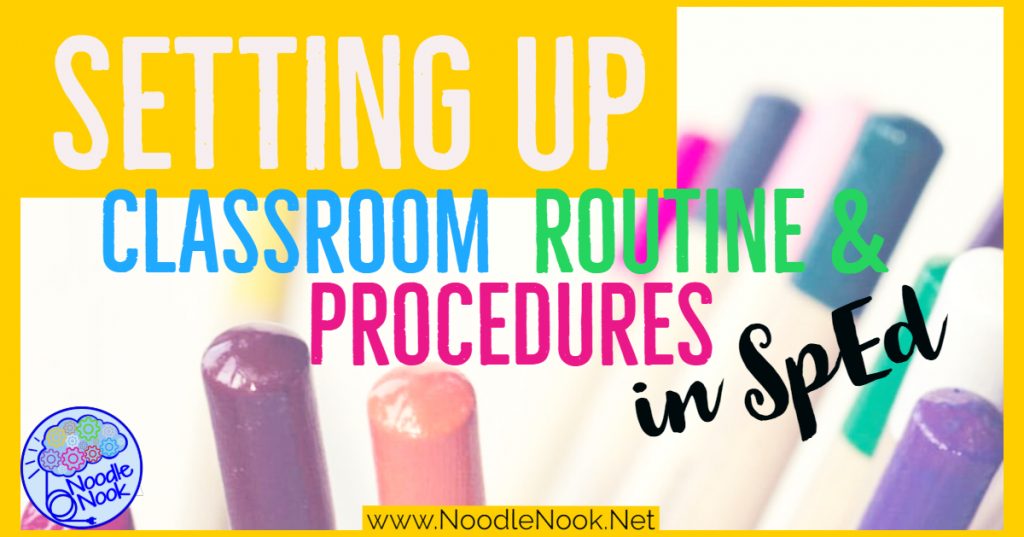
Any teacher will tell you that establishing rules, routines and procedures in the classroom is a lifesaver! If you take time at the front end to teach your classroom expectations and routines, then you will save yourself from a huge headache later. So, when it comes to teaching Rules, Routines and Procedures in a Self-Contained classroom, how do you get it done? That is the question we answer in this episode of The Teacher Nook podcast: How to Set Up Classroom Routines in SpEd.
Steps To Set Up Routine and Procedures
It can sometimes feel like the chaos of a self-contained classroom is impossible to wrangle in. There is so much more going on than a general ed classroom, like restroom schedules, personal care needs, behavior modifications, outside therapists coming in and out, as well as a million other unexpected things that are just part of the daily classroom.
BUT… you have to get some sense of routine going from day one. If you don’t, you’ll be fighting that chaos all year and, unknowingly, feeding future behaviors.
Step 1: Practice
Practice makes perfect… and routines are never perfect the first day or even the first week of school, no matter how well-intentioned you are. When it comes time to set up routines and procedures in your classroom, you have to start with a good plan. That means getting ahead of the schedule and knowing what is coming (like IEP staffings & meetings, data points, and outside therapy sessions).
Lay out a good plan… but then be flexible enough to know that your plan will most likely need to be revised. You’re going to need to be responsive to what works and what doesn’t.
Before we dismiss a plan as ineffective, we have to put in the time to practice. When you practice anything in a self-contained classroom with students who have disabilities, you are going to have to do that in three steps.
First, practice by telling. You are going to tell the students and the staff what you want them to do as part of the routine. Next, you are going to practice by showing the students and staff what you want them to do and exactly what it should look like. Finally, you will practice by doing. And doing. And doing. There will be a lot of doing because our students don’t always learn things the first time (or first ten times) they hear, see or do something. Every time you practice, you will say, show, and then do.
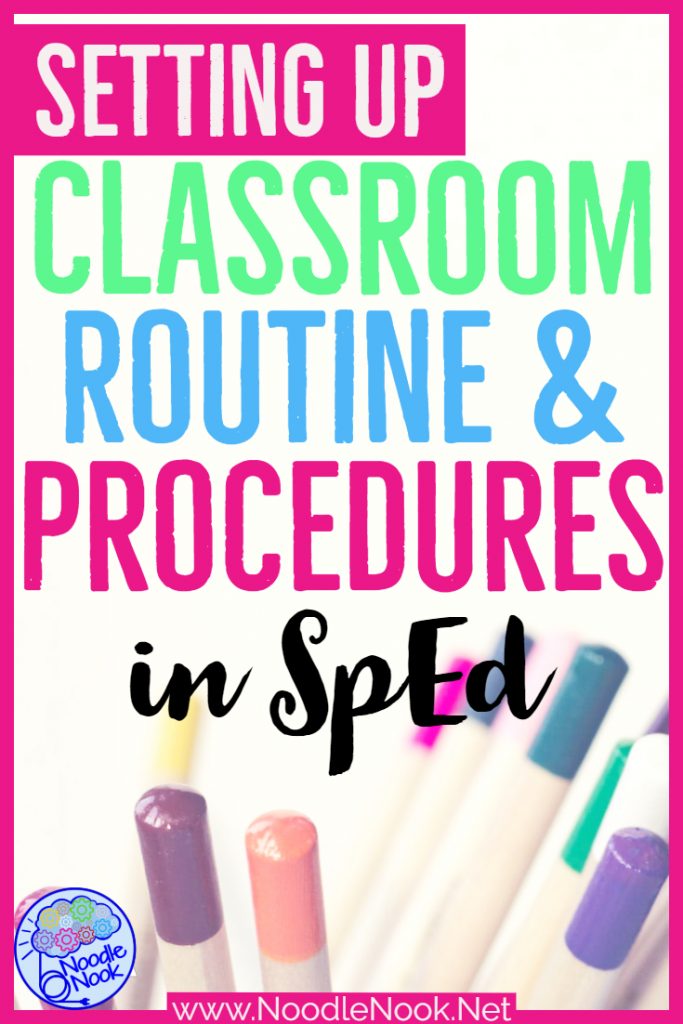
Step 2: Praise, Praise, Praise
Remember, you are going to be practicing these routines and procedures several times before they stick. Like, a lot! When you are in those moments, it can be easy to get frustrated. You have, after all, told, shown, and done this stuff a million times already. Right?
Right.
But you’ll have to keep doing it and praise the good things you see with gusto while positively correcting the things that were not quite right. If you just respond to the negative, then it breeds an overall negativity in your classroom that is hard to overcome. That negativity spreads like a virus and soon enough everyone will have the stinks. You don’t want the stink! Be positive and praise, praise, praise!
Step 3: Visual Supports
We are working with students who have disabilities. Most of them process oral language poorly or need extra wait time to respond to verbal directions. Please, please, please pair verbal directions with visual supports. It would also help everyone (staff, students, and you) to have a visual schedule on the board that can be referenced throughout the day. And, if you use the station rotation model (and I hope you do), label the room so students know what is where.
On a smaller level, as you see students need extra support to do tasks, bust out a first-then or micro schedule board. If you are struggling with behaviors, then you need that and maybe a token board as well. Visuals help so much when students struggle with routine and schedule. Be sure you have some as you set up classroom routines in SpEd rooms or Autism Units.
Step 4: Consistency
First day, last day… rules don’t change. BUT if you let the rules slide once, you will regret it all year. Sometimes all it takes is one time of being allowed extra time on break, a nap instead of math, or a tangible reward that reinforces bad behavior and you are sunk. Sunk!
Whatever your rules… whatever your procedures, stay consistent. And be sure your support staff stays consistent too. You all have to be on the same page and all running the same system to build a classroom of calm smoothness. And we all want calm smoothness!
Step 5: Remember, Every Day is a New Day!
The crap is going to hit the fan. It is inevitable. Remember, every day is a new day. You can try again tomorrow if things didn’t work today. Don’t give up. And, on the flip side, things that worked today may not work tomorrow because our students forget things (including the procedures). That’s where practice comes in and your consistency matters. Be sure to give yourself a break. Don’t be discouraged and stay the course.
5 Steps to Set Up Routines in SpEd Classrooms
There you have it… 5 surefire ways to set up routines and procedures in your self-contained SpEd classroom. These steps may seem overwhelming, but start today and you’ll get there.
If you are looking for visual supports to help students in your SpEd classroom, check out these from Noodle Nook: Visual Schedule feat. Boardmaker, Behavior Toolkit, Token Boards, and Social Stories. I especially love the social stories as a daily read to explain and review your expectations about specific behaviors, like I Work at School, which reviews how students behave in group work. and during independent work time.
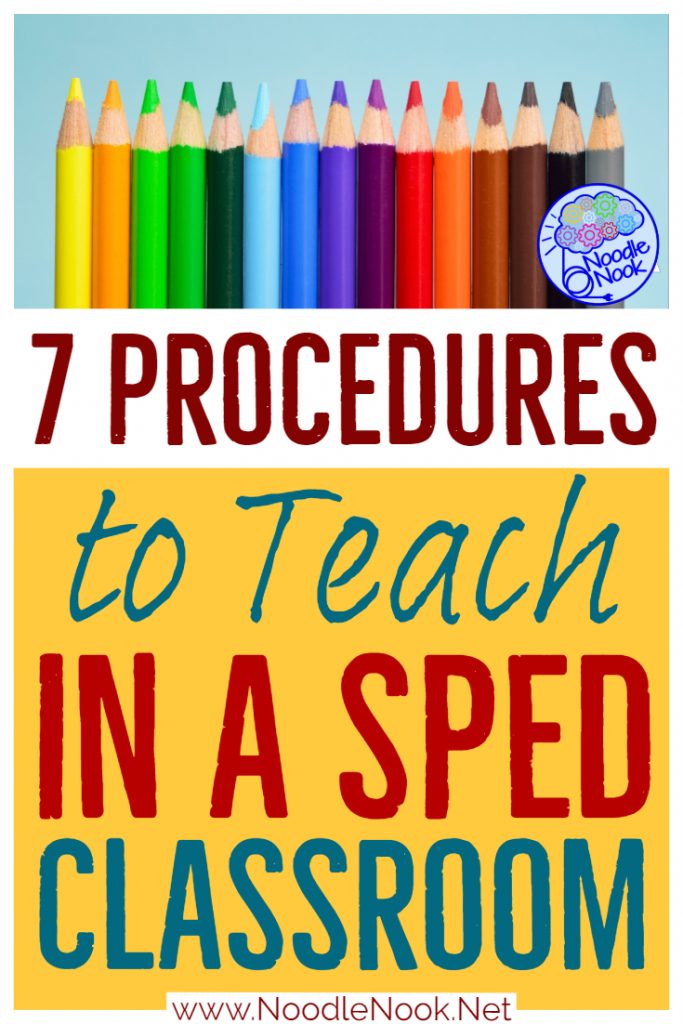
BONUS: What Routines and Procedures Should You Teach FIRST?!?
Easy peasy. If you are stressing about what routines to teach first in a self-contained SpEd classroom or Autism Unit, then we got you. Here are the 7 routines you need to teach first:
1: Start of Class Procedure
Every class period needs to know what to do once that bell rings. How do you want to handle backpacks, notes from home, supplies/lunch sacks, and morning work? Come up with a plan and start practicing that starting day one.
2: Restrooming
You have got to have a plan for all the restroom needs you’ll have. Most self-contained SpEd students are going to use the restroom with support or supervision. What is that going to look like? Are your students working towards independence? How will you train that? And what restrooming schedule are you going to put in place? All this needs to be thought out and planned for.
3: Asking for Help
Students with significant disabilities need lots of help throughout the day… but if we are always there offering help, it can breed learned helplessness (read more about that here). You need to establish a way for students to ask for help in a way that is socially acceptable and within a student’s ability level.
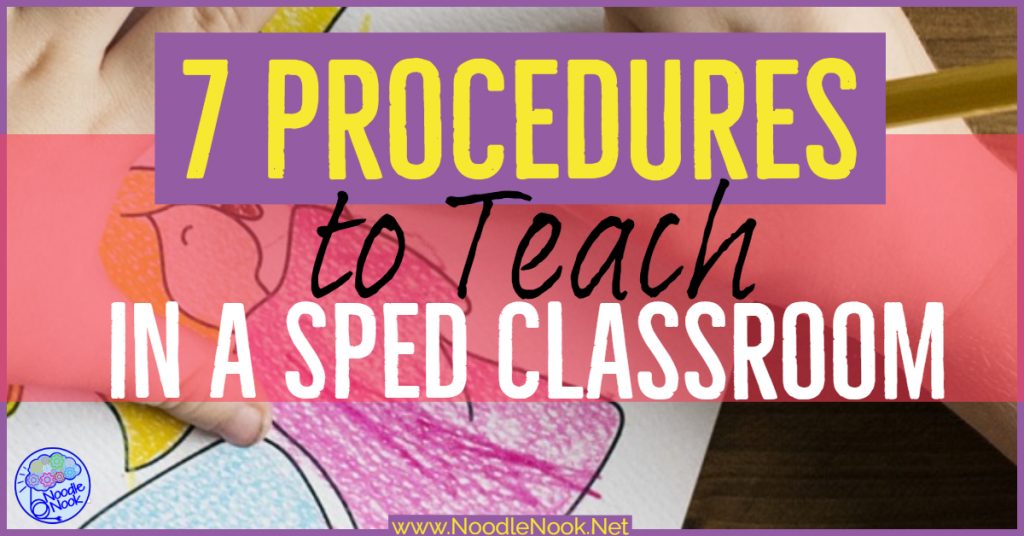
4: Getting Materials
I used to have an electric pencil sharpener. Problem was, when anyone was talking and it came on, no one could hear anything. I had to have a rule for when students could sharpen. You may need one too. How will kids access activities, rewards, materials, and supplies?
5: Rotating during Stations
When it is time to move around the classroom, it can feel like herding cats. During a tsunami. Everyone starts moving everywhere. Think and plan ahead of time how you will signal the students to transition (with visual support), how they will leave their current station (neat and clean I hope) as well as the directional flow of traffic in the room (clockwise maybe).
6: End of Class Procedures
When that bell rings, there is a lot of mini-chaos in the transition. Have a plan for students in this time. Are they turning in their papers? Are they getting downtime or a break? Are you expecting them to work? And on what? If they are just sitting there, you can be secretly feeding behaviors. Have a plan for what will happen at the end of class and in between classes too.
7: End of Day Routine
There is a lot to remember at the end of the day… parent communication forms, restrooming rotations, gathering personal items for students, and dressing for the weather. You need a plan to not only remember all the things that can be forgotten, but also what you want students to be doing in that time so they don’t get frustrated in the transition or exhibit behaviors. Have a plan and a job for students to keep busy with.
There you have it – How to set up routines in a SpEd classroom as well as what procedures to start with first. Good Luck, mighty teacher. Stay Strong and Teach On!
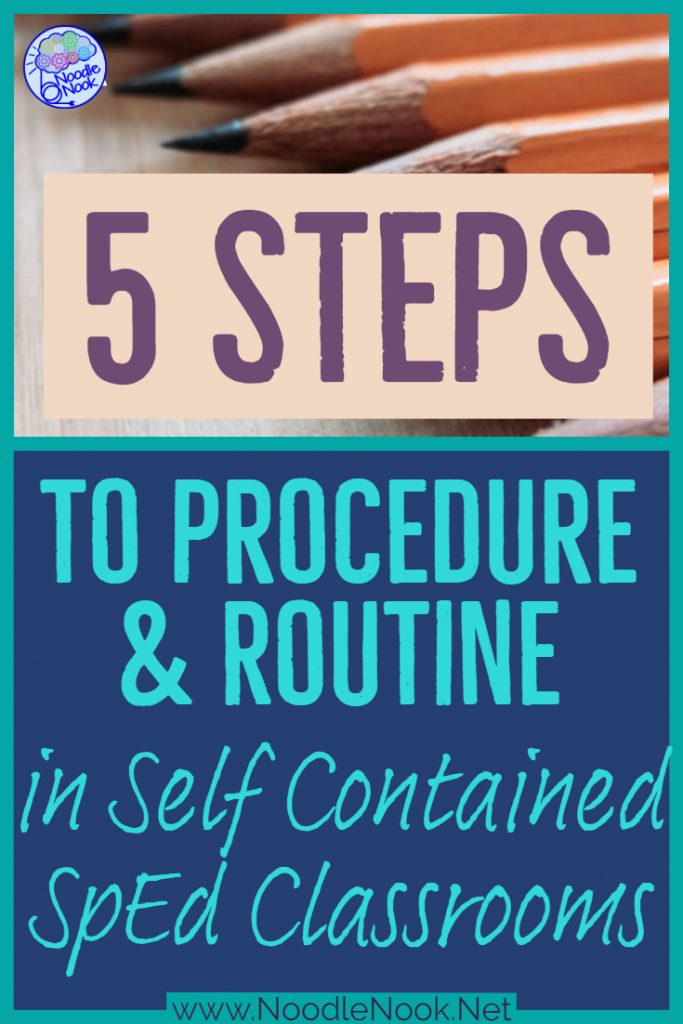
HEY! Get social with us! Follow us on Pinterest, Instagram, Facebook, Twitter, YouTube or iTunes!
Tips, tricks, resources, and FREE tools for teachers in Special Ed and Autism Units. Listen, read and watch to learn how to be more successful at Noodle Nook. And be sure to subscribe to the monthly newsletter TODAY!
Article Citation: [cite]
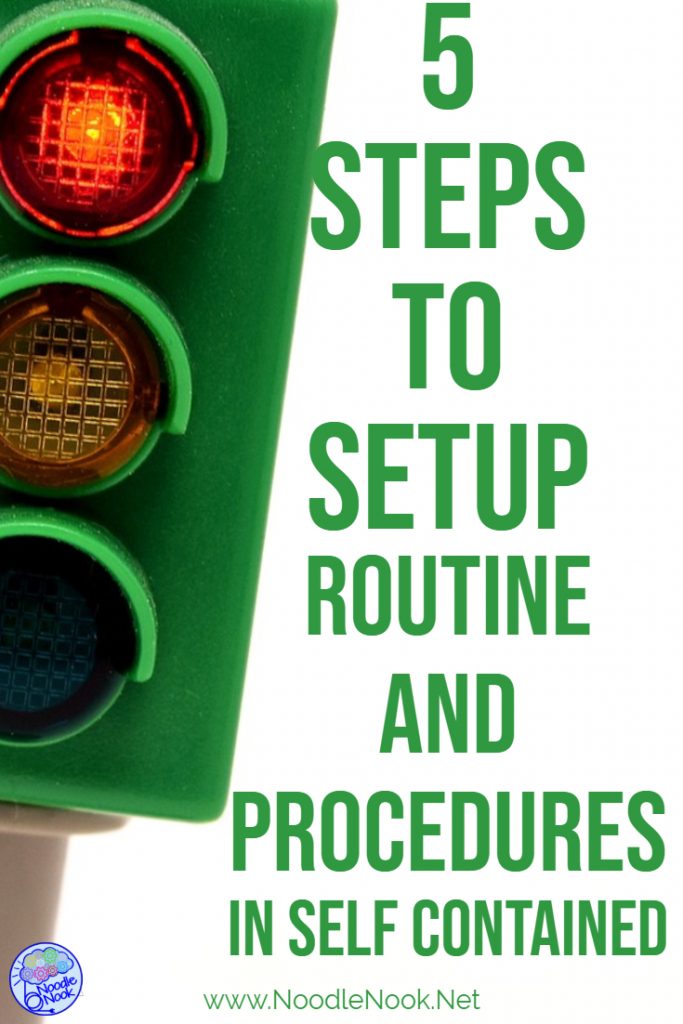

Thank you so much for this article. Teaching learners with special needs is a task that is not for everyone, but this article is really helpful, especially for teachers who plan to teach SpEd.
Comments are closed.